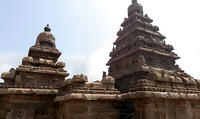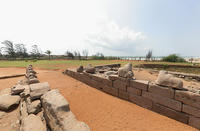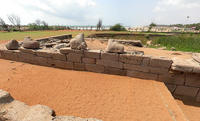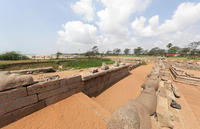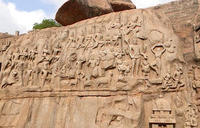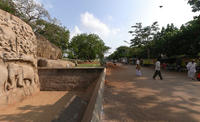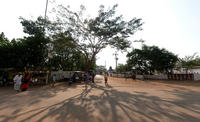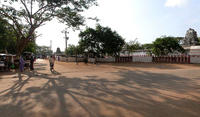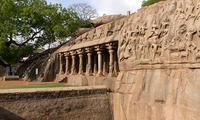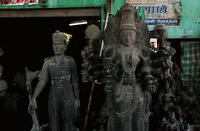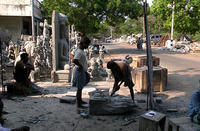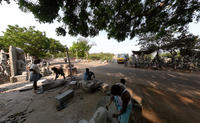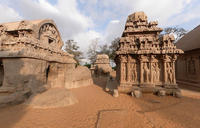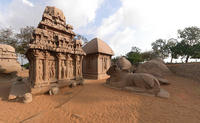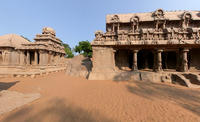You are in: Asia -> India -> Group of Monuments a... , and traditional search or Image Gallery will yield results of this site only
Group of Monuments at Mahabalipuram
| Site number: | 249 |
|
| Type of site: | Cultural | |
| Date: | 7-8th century | |
| Date of Inscription: | 1984 | |
| Location: | Asia, India, Tamil Nadu State, Chingleput District | |
Up to 75 images are shown here. Click on each for more details or on Image Gallery for more images.
| Description: | The sanctuaries of the Group of Monuments at Mahabalipuram, founded by the Pallava kings, were carved out of rock along the Coromandel coast during the 7th and 8th centuries. The site is particularly renowned for its rathas (chariot formed temples), mandapas (cave sanctuaries), giant open-air reliefs (for instance the famous 'Descent of the Ganges'), and the temple of Rivage, with thousands of sculptures glorifying Shiva. --WHMNet paraphrase from the description at WHC Site, where additional information is available. For 360 degree imaging of this site, click here. | |
| Mahabalipuram was a 7th century port city of the South Indian dynasty of the Pallavas around 60 km south from the city of Chennai in Tamil Nadu. It is believed to have been named after the Pallava king Mamalla. It has various historic monuments built largely between the 7th and the 9th century, and has been classified as a UNESCO World Heritage Site. The monuments are mostly rock-cut and monolithic, and constitute the early stages of Dravidian architecture wherein Buddhist elements of design are prominently visible. They are constituted by cave temples, monolithic rathas (chariots), sculpted reliefs and structural temples. The pillars are of the Dravidian order. The sculptures are excellent examples of Pallava art. It is believed by some that this area served as a school for young sculptors. The different sculptures, some half finished, may have been examples of different styles of architecture, probably demonstrated by instructors and practiced on by young students. This can be seen in the Pancha Rathas where each Ratha is sculpted in a different style. --Wikipedia. Text is available under the Creative Commons Attribution-ShareAlike License. For 360 degree imaging of this site, click here. | ||
| Source: | http://whc.unesco.org/en/list/249 | |
| Reference: | 1. UNESCO World Heritage Center, Site Page. | |




